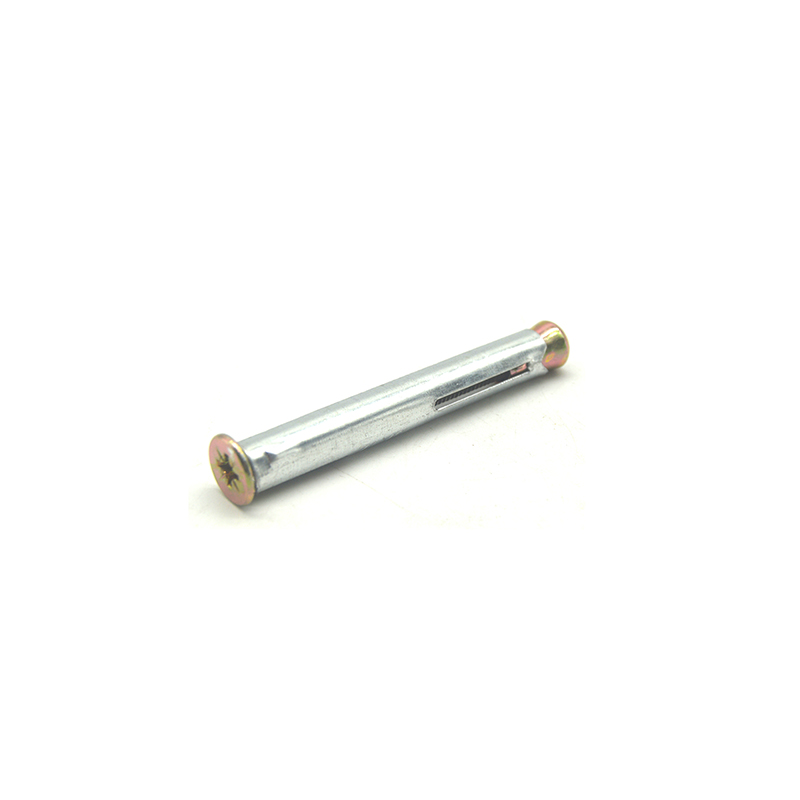- English
- Chinese
- French
- German
- Portuguese
- Spanish
- Russian
- Japanese
- Korean
- Arabic
- Irish
- Greek
- Turkish
- Italian
- Danish
- Romanian
- Indonesian
- Czech
- Afrikaans
- Swedish
- Polish
- Basque
- Catalan
- Esperanto
- Hindi
- Lao
- Albanian
- Amharic
- Armenian
- Azerbaijani
- Belarusian
- Bengali
- Bosnian
- Bulgarian
- Cebuano
- Chichewa
- Corsican
- Croatian
- Dutch
- Estonian
- Filipino
- Finnish
- Frisian
- Galician
- Georgian
- Gujarati
- Haitian
- Hausa
- Hawaiian
- Hebrew
- Hmong
- Hungarian
- Icelandic
- Igbo
- Javanese
- Kannada
- Kazakh
- Khmer
- Kurdish
- Kyrgyz
- Latin
- Latvian
- Lithuanian
- Luxembou..
- Macedonian
- Malagasy
- Malay
- Malayalam
- Maltese
- Maori
- Marathi
- Mongolian
- Burmese
- Nepali
- Norwegian
- Pashto
- Persian
- Punjabi
- Serbian
- Sesotho
- Sinhala
- Slovak
- Slovenian
- Somali
- Samoan
- Scots Gaelic
- Shona
- Sindhi
- Sundanese
- Swahili
- Tajik
- Tamil
- Telugu
- Ukrainian
- Urdu
- Uzbek
- Vietnamese
- Welsh
- Xhosa
- Yiddish
- Yoruba
- Zulu
- Kinyarwanda
- Tatar
- Oriya
- Turkmen
- Uyghur

3 4 สกรูเกลียวปล่อย
ความซับซ้อนของการใช้สกรูเกลียวปล่อย 3-4 ตัว
สำหรับผู้ที่ชื่นชอบการ DIY และมืออาชีพหลายคน สกรูเกลียวปล่อยโดยเฉพาะไซส์ 3-4 จะคละแบบนิดหน่อย คุณคิดว่าคุณรู้จักพวกเขา แล้วพวกเขาก็ขว้างลูกโค้งใส่คุณ บ่อยครั้ง ความท้าทายที่แท้จริงไม่ได้อยู่ที่การทำความเข้าใจสิ่งที่พวกเขาทำ—เจาะรูของตัวเองในขณะที่พวกเขาถูกขับเคลื่อน—แต่คือการตระหนักว่าเมื่อใดที่พวกเขาเหมาะสมกับงานที่ทำอยู่
วิทยาศาสตร์เบื้องหลังสกรูเกลียวปล่อย
คุณอาจคิดว่าสกรูเป็นเพียงสกรู แต่นั่นก็เหมือนกับการบอกว่ารถทุกคันเหมือนกันเพราะว่าทุกคันขับเคลื่อน ด้วย สกรูเกลียวปล่อย 3-4 ตัวปีศาจอยู่ในรายละเอียดอย่างแน่นอน โดยทั่วไปตัวเลขในที่นี้หมายถึงขนาดและความยาว และแต่ละรูปแบบจะมีค่าของตัวเองในสถานการณ์ที่แตกต่างกัน ตัวอย่างเช่น ขนาดเหล่านี้เหมาะสำหรับงานเบาถึงปานกลาง โดดเด่นเป็นพิเศษกับวัสดุอย่างพลาสติก โลหะ และไม้เนื้ออ่อน สกรูเหล่านี้ประหยัดเวลาและให้ความสะดวกสบาย โดยลดความจำเป็นในการเจาะล่วงหน้า แต่ความมหัศจรรย์ที่แท้จริงนั้นมาจากการออกแบบเกลียว
อย่างไรก็ตาม แม้ว่าพวกเขาจะสัญญาว่าจะสบายใจ แต่ก็ยังมีข้อเสียอยู่ เนื้อหาที่คุณร่วมงานด้วยสามารถทำให้พวกเขาเป็นความฝันหรือหายนะก็ได้ ตัวอย่างเช่น แผ่นโลหะอ่อนอาจโค้งงอกับเกลียวได้ง่าย แต่เป็นโลหะที่แข็งกว่าใช่ไหม คุณอาจต้องใช้กล้ามเนื้อเพิ่มขึ้น หรือแม้แต่สว่านสำรองสำหรับรูนำร่อง
Handan Shengtong Fastener Manufacturing Co., Ltd. ซึ่งตั้งอยู่ในมณฑลเหอเป่ย นำเสนอสกรูเหล่านี้หลากหลายรูปแบบ เป็นที่น่าสังเกตว่าข้อเสนอของพวกเขามีจำหน่ายที่ https://www.shengtongfastener.comมาพร้อมกับการใส่ใจในคุณภาพ ซึ่งสะท้อนถึงสถานที่ตั้งของพวกเขาในศูนย์กลางอุตสาหกรรมตัวยึดแห่งหนึ่งของจีน
การเลือกเครื่องมือและวิธีการที่เหมาะสม
เมื่อขันสกรูเหล่านี้เข้ากับวัสดุที่แข็งกว่า คุณจำเป็นต้องมีเครื่องมือที่เหมาะสมเป็นสิ่งสำคัญ ตัวขับเคลื่อนพลังงานที่แข็งแกร่งคือเพื่อนที่ดีที่สุดของคุณที่นี่ แต่ควรระวัง: การใช้ความเร็วมากเกินไปจะทำให้มีความร้อนสูงเกินไป และความร้อนสูงเกินไปอาจทำให้หัวสกรูหลุดเร็วกว่าที่คุณจะพูดว่า “วันแย่ๆ”
ในโครงการหนึ่ง ฉันประเมินความแข็งแกร่งของโลหะที่ฉันทำงานด้วยต่ำไป ผลลัพธ์? หัวหลุดและสกรูเสียสองสามตัว มันเป็นบทเรียนที่ยาก ความเร็วที่ช้าลงและการควบคุมแรงกดดันที่มากขึ้นจะให้ผลดีกว่ามาก โดยเฉพาะอย่างยิ่งเมื่อสกรูมีขนาดเล็ก เช่น สกรูในช่วง 3-4
เคล็ดลับอื่น? การหล่อลื่น ขี้ผึ้งหรือน้ำมันเล็กน้อยสามารถสร้างความแตกต่างในการลดแรงเสียดทานและช่วยให้ทางเข้าสะอาดขึ้น โดยเฉพาะอย่างยิ่งกับวัสดุที่หนากว่า เชื่อฉันสิ มันช่วยประหยัดเวลาและความยุ่งยากได้มาก
ข้อผิดพลาดทั่วไปและวิธีหลีกเลี่ยง
การขับมากเกินไปถือเป็นข้อผิดพลาดทั่วไปประการหนึ่งเมื่อใช้ สกรูเกลียวปล่อย. ง่ายต่อการลงน้ำและทำให้สกรูจมลึกเกินไป โดยเฉพาะอย่างยิ่งเมื่อใช้เครื่องมือไฟฟ้า สิ่งนี้เสี่ยงต่อการสร้างความเสียหายให้กับวัสดุและทำให้การยึดเกาะอ่อนลง เคล็ดลับ? ปรับการตั้งค่าแรงบิดของคุณและใส่ใจกับความต้านทาน
แล้วเรื่องการจัดตำแหน่ง ผู้ใช้ DIY ซึ่งเป็นมือใหม่ส่วนใหญ่มักจะดูถูกดูแคลนความสำคัญของการยึดทั้งสว่านและสกรูให้มั่นคง การทำมุมอาจทำให้เกลียวเสียหายและทำให้สกรูมีประสิทธิภาพน้อยลง
การรู้จักวัสดุของคุณเป็นสิ่งสำคัญเช่นกัน การที่สกรูเหล่านี้สามารถเจาะสิ่งต่างๆ ได้หลายอย่างไม่ได้หมายความว่าควรจะเป็นเช่นนั้น วัสดุบางอย่าง เช่น ไม้เนื้อแข็งหรือแผงคอมโพสิต อาจดูน่าดึงดูดใจ แต่หากไม่มีการเจาะล่วงหน้า คุณก็แค่เตรียมพบกับปัญหา เพราะสกรูที่หักอาจทำให้เกิดความเร็วที่ไม่คาดคิดได้
กรณีศึกษาและการประยุกต์ในโลกแห่งความเป็นจริง
ในทางปฏิบัติฉันเคยเห็น สกรูเกลียวปล่อย 3-4 ตัว เปลี่ยนโครงการตู้ เหมาะอย่างยิ่งสำหรับการยึดบานพับโดยไม่ทำให้เนื้อไม้แตก แม้ว่ารูที่เจาะไว้ล่วงหน้าอาจทำให้ความแข็งแรงหรือความสวยงามของชิ้นงานลดลงก็ตาม แต่ในโปรเจ็กต์ที่เร่งรีบจนเกินไปโปรเจ็กต์หนึ่ง การเร่งรัดให้เข้ากับฉากยึดโลหะได้สอนฉันถึงคุณค่าของงานที่อ่อนโยนและแม่นยำ
อีกหนึ่งโครงการที่น่าจดจำเกี่ยวกับการใช้สกรูเหล่านี้ในป้ายกลางแจ้ง ทางเลือกที่นี่เกี่ยวข้องกับการทำความเข้าใจสภาพอากาศและปัจจัยการกัดกร่อน รุ่นสเตนเลสสตีลป้องกันสนิม ช่วยประหยัดทั้งเวลาและการบำรุงรักษาในสายการผลิต
ประสบการณ์เหล่านี้ช่วยเสริมสิ่งที่มักเทศนาในบทช่วยสอน—จับคู่สกรูให้เข้ากับงานเสมอ โดยคำนึงถึงไม่เพียงแค่เนื้อหาเท่านั้น แต่ยังรวมถึงเงื่อนไขที่ต้องเผชิญด้วย
การบำรุงรักษาและการเก็บรักษาที่เหมาะสม
แง่มุมหนึ่งที่มักถูกมองข้ามคือการจัดเก็บและการดูแลรักษาสกรูเหล่านี้ ความชื้นอาจเป็นศัตรูเงียบๆ ทำให้เกิดสนิมและความสมบูรณ์ของโครงสร้างที่อ่อนแอลงเมื่อเวลาผ่านไป ภาชนะที่ปิดสนิทเป็นสิ่งจำเป็น โดยเฉพาะอย่างยิ่งหากคุณอยู่ในสภาพแวดล้อมที่ไม่เอื้ออำนวย
อีกประเด็นที่ต้องพิจารณาคือการตรวจสอบเป็นประจำ เมื่อเวลาผ่านไป เคล็ดลับเครื่องมือที่คุณใช้ขับขี่อาจเสื่อมสภาพลง การตรวจสอบและการเปลี่ยนเป็นประจำช่วยให้มั่นใจได้ถึงประสิทธิภาพสูงสุดและป้องกันความเสียหายต่อสกรูหรือโครงการของคุณ
รวมๆแล้วทำงานร่วมกับ. สกรูเกลียวปล่อย 3-4 ตัว ต้องใช้ศิลปะและวิทยาศาสตร์ผสมผสานกัน ตัวยึดแบบเรียบง่ายเหล่านี้มีการใช้งานที่หลากหลาย แต่ต้องได้รับความเคารพและความเข้าใจเพื่อเพิ่มศักยภาพสูงสุด นี่ไม่ใช่แค่การหมุนสกรูเท่านั้น แต่ยังต้องหมุนสกรูอย่างมีชั้นเชิง ความอดทน และใช้แรงในปริมาณที่เหมาะสมอีกด้วย และเช่นเคย แหล่งข้อมูลที่เชื่อถือได้ เช่น Handan Shengtong Fastener Manufacturing Co., Ltd. สามารถทำให้การเดินทางของคุณง่ายขึ้นอีกนิด
ที่เกี่ยวข้อง ผลิตภัณฑ์
สินค้าที่เกี่ยวข้อง



















